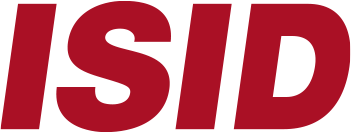Medical research is the driving force behind innovations in healthcare, continually pushing the boundaries of what is possible in patient care and treatment. AI-enhanced OR recording platforms like VideoMed are at the forefront of this revolution, providing detailed recordings of surgeries that serve as invaluable data for researchers. These advanced systems offer multi-camera angles, voice control, and Speech-to-text capabilities, capturing every aspect of a surgical procedure with precision and detail.
Revolutionizing Medical Research with AI Technology
AI-enhanced OR recording platforms are providing researchers with unprecedented access to high-quality surgical data, facilitating deeper insights and more robust analyses.
- Comprehensive Surgical Recordings: AI-driven OR recording platforms, such as VideoMed, provide detailed, multi-camera recordings of surgeries. This comprehensive capture allows researchers to analyze procedures from multiple angles, gaining a thorough understanding of surgical techniques and outcomes.
- Voice Control and Speech-to-Text Capabilities: Voice control and Speech-to-text functionalities enhance the documentation process. Surgeons can verbally annotate procedures in real-time, and the system transcribes these annotations automatically. This feature ensures that every critical detail is accurately documented, making it easier for researchers to understand the context and nuances of each procedure.
Facilitating Data Analysis and Innovation
High-quality data is the cornerstone of effective medical research, and AI-enhanced OR recording platforms provide researchers with the detailed and precise data needed to drive innovation and improve patient outcomes. Detailed recordings allow researchers to analyze various surgical techniques, identifying best practices and areas for improvement.
This analysis aids in developing new methodologies that enhance surgical outcomes and patient safety. By examining high-quality surgical recordings, researchers can identify patterns and best practices that lead to successful outcomes, which are crucial for training future surgeons and improving existing surgical protocols. Additionally, the data collected from AI-driven OR recording systems can be used to develop and refine new surgical techniques and procedures, driving a continuous cycle of innovation that ensures patient care remains at the cutting edge of medical science.

Accelerating Medical Research with VideoMed
AI-enhanced OR recording platforms like VideoMed not only facilitate detailed analysis but also accelerate the pace of medical research. Here’s how VideoMed contributes to groundbreaking discoveries:
- High-Quality Data Collection: VideoMed’s advanced features, such as multi-camera angles and Speech-to-text capabilities, ensure the collection of high-quality data. This data is essential for conducting thorough and reliable research studies.
- Improved Efficiency and Accuracy: By integrating VideoMed with the Hospital Information System (HIS), researchers and medical staff can access surgical recordings directly from their familiar interface. This seamless integration improves the efficiency and accuracy of diagnostics, as medical professionals no longer need to visit the imaging devices physically.
- Enhancing Collaborative Research: The availability of detailed surgical recordings fosters collaborative research efforts. Surgeons, radiologists, and other medical professionals can easily share and review recordings, facilitating better communication and cooperation in research projects.
Advantages for Hospital Staff
The benefits of AI-enhanced OR recording platforms extend beyond research, positively impacting various aspects of hospital operations and patient care. Radiologists and surgeons can access detailed surgical recordings directly from their HIS interface, enhancing diagnostic accuracy with comprehensive visual data that enables more informed decision-making. By making surgical recordings readily available, VideoMed streamlines the workflow for medical professionals, reducing the time and effort needed to review procedures and allowing for quicker diagnostics and treatment planning.
Conclusion:
AI-driven OR recording systems like VideoMed are revolutionizing medical research by providing detailed, multi-camera recordings with advanced features such as voice control and Speech-to-text capabilities. These systems facilitate the collection and analysis of high-quality data, accelerating the pace of medical research and contributing to groundbreaking discoveries that enhance patient care.
Integrating VideoMed with the Hospital Information System ensures that surgical recordings are easily accessible, improving the efficiency and accuracy of diagnostics. By leveraging AI technology, VideoMed is not only advancing medical research but also transforming the overall quality of healthcare, leading to better patient outcomes and a more efficient healthcare system.
